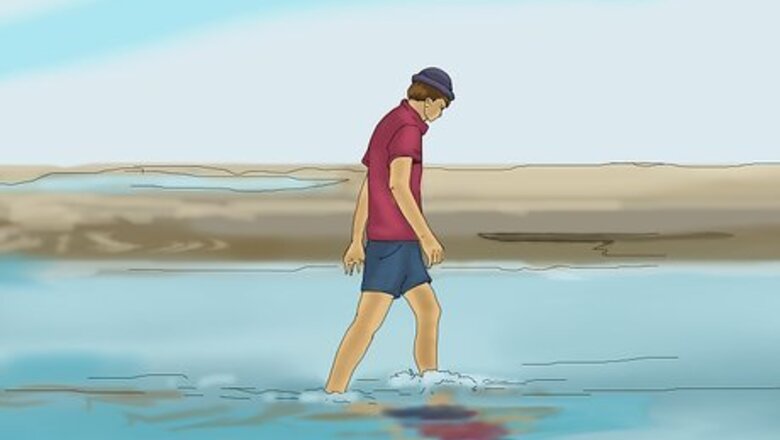
views
Choosing the Right Time and Place
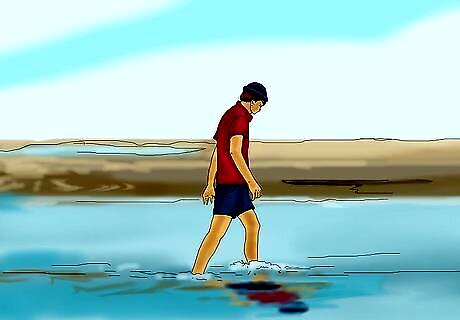
Hunt in shallow water. Prawns hatch in shallow coastal waters. They also tend to stay in large, shallow bodies of water with tide pools or bays. Fish in these waters instead of deep bodies of water.
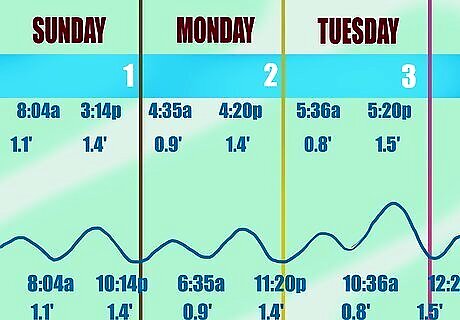
Follow the tide. Veterans always fish for prawns when the tide runs out. This is because prawns will naturally come up toward the surface of the water as it becomes shallower. This makes it easy to skim them out of the water with a hand-held net or with a two-person trawler net.
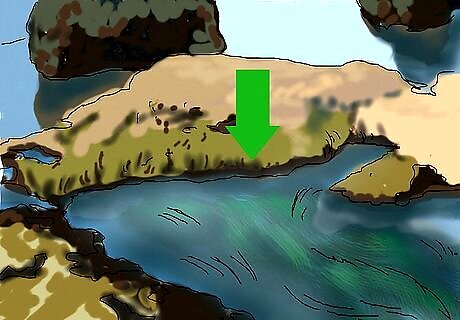
Search tide pools for seaweed. Plant material makes up a good part of a prawn’s diet. If you see a tide pool with green seaweed, you’ll have a better chance of finding a prawn eating and hiding in it. However, you should be prepared for a lot of hunching over. Prawns tend to hide in awkward spots.

Fish in the mid- to late summer. July to September is the best time for prawning. This is when the water reaches its warmest temperatures. It is also when many species of prawn have completed the mating season and are more likely to be closer to the shore.

Fish at night. Many species of prawns are sensitive to light, so fishing at night is one of the best ways to fish for them. Try to plan fishing trips on evenings when the moon is full. This will maximize the light reflected on the water's surface. Use a flashlight to help you see the prawns’ eyes. Shine it in an arc over the surface of the water.
Using a Boat
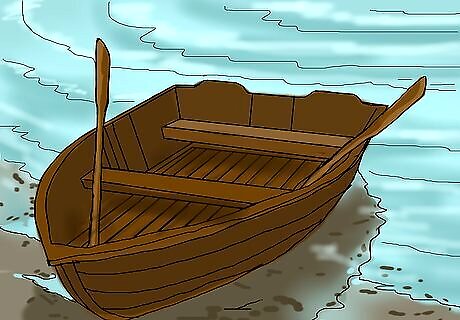
Choose your boat. Make sure your boat has enough space for a cooler to store freshly caught prawns. A row boat without a motor works best, as it won’t create noise and scare the prawns away. If you do use a boat with a motor, turn the motor off as you approach the prawns’ habitat.
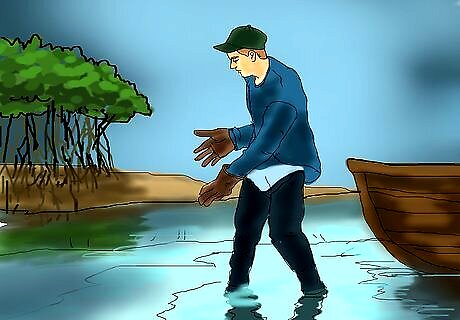
Get in the water. After you steer the boat to your desired location, put on your wading boots and climb overboard. When you wade, you can walk through shallow waters where prawns are plentiful and follow them as they move. Return to the boat to store your prawns in a cooler to keep them fresh.

Work with a partner. Fishing for prawns will be easier if you work as a team with one or two other fishers. One of you can be responsible for the net while the other steers the boat or aims the flashlight.
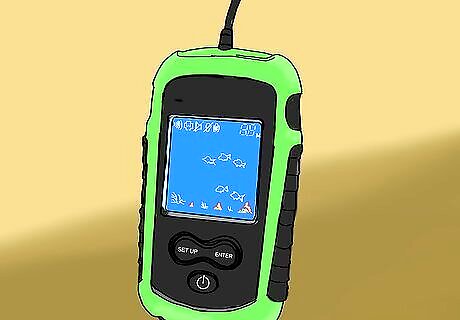
Use a sounder. A sounder is a sonar device that can help you find fish. To tell prawns apart from fish, look for a mass of objects coming from the bottom of the water. It should look like a cloud. You can buy high-tech sounders at marine and fishing supply stores for under $100.
Using a Net
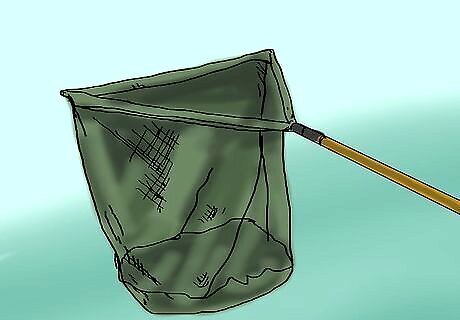
Choose your net. Fishing supply stores usually sell nets in a hand-held variety, similar to a butterfly net, and in a larger commercial varieties adapted for trawlers. Choose which one is right for your prawning needs.
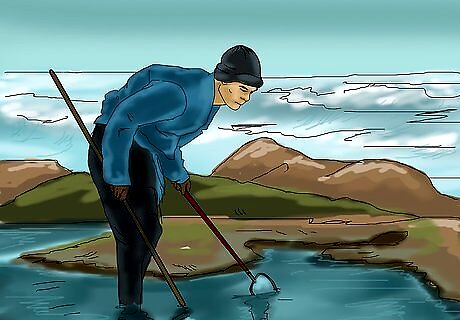
Move the water. Create motion in the water around you. Prawns naturally swim with the tide, so your motion will stimulate them to move with the water and come up off the bottom of the bay or tide pool.
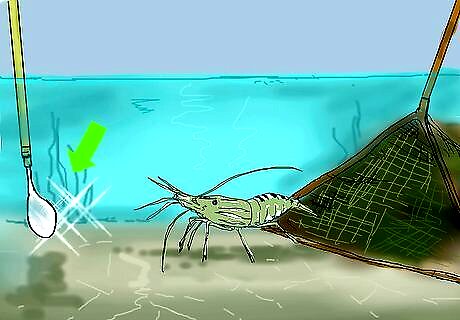
Use a metal spoon. Position your hand-held net behind prawns. Place the spoon in front of them. By instinct, they’ll back away from the shiny object. As they swim backward, they’ll end up in your net.
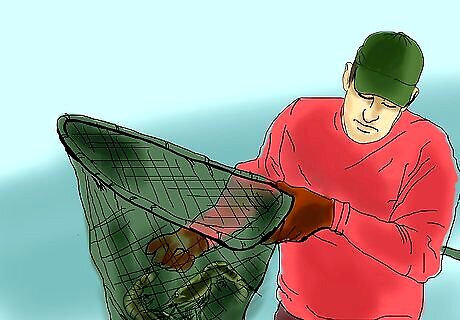
Bring the hand-held net back up quickly. Prawns won’t stay in the net for long if you keep it in the water. As soon as you feel the prawns enter the net, sweep it up with a quick upward forearm movement. Angle the net pointed-side-down to keep the prawns from escaping.
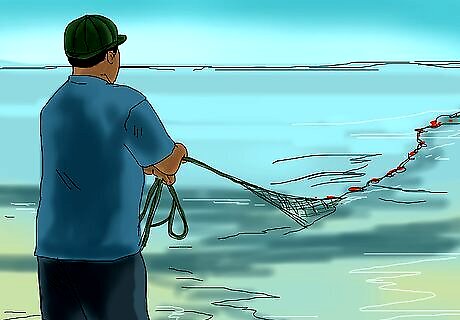
Spread commercial nets out. Do this slowly and behind the school of prawns before disturbing the water in front of them. Make sure there is a fisher with the net ready to gather it up around the prawns when they swim into it with the movement of the water.
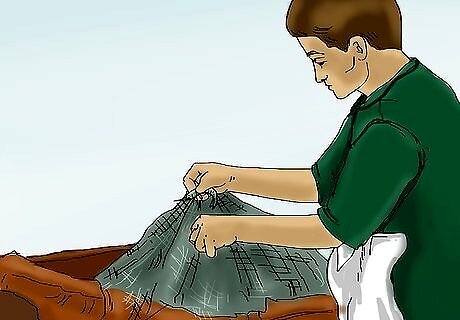
Check for bycatch. Nets sweep up every solid form in their paths. As soon as you make your catch, inspect the net for animals that aren’t prawns. Even if you know they’re not endangered, toss them back in the water. If you find plastic, metal, or other refuse, toss them in a nearby recycling bin or trashcan.
Using a Trap
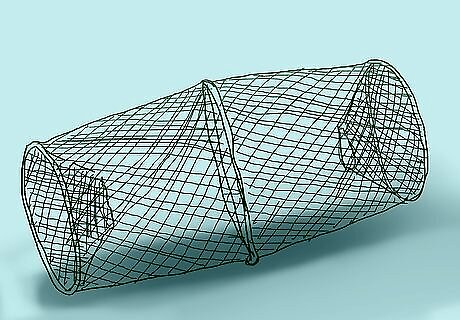
Choose your trap. Fishing supply stores usually sell traps under the name “shrimp traps,” but they can be used for prawning. They are available in a variety of sizes. Determine which size fits your needs. A modest sized trap about ½ inch by one inch will usually do the trick. Double check with your local authorities on limits to trap sizes before making your purchase.
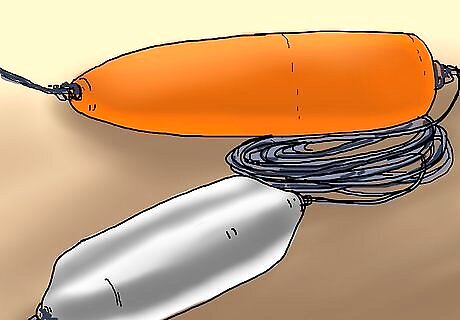
Buy a weighted line. You’ll need this to lower the trap in the water. Weighted lines prevent the trap from floating and endangering marine life and boats. Fishing supply stores sell these in a variety of lengths. Purchase a line that’s about 25 percent longer than the depth you want to lower your trap to.
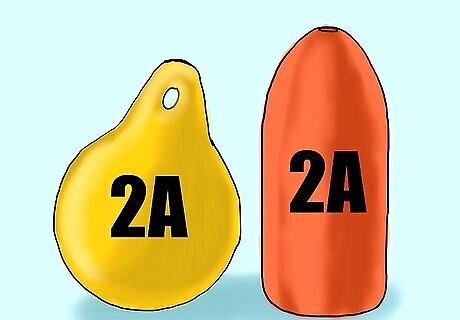
Use a buoy. You’ll need a regulation fishing buoy to spot the location of your trap. Don’t use plastic bottles from home, as they’re too light to accurately mark where your trap is. Mark your buoy with a unique color, initials, or serial number to tell it apart from other fishers’ buoys.
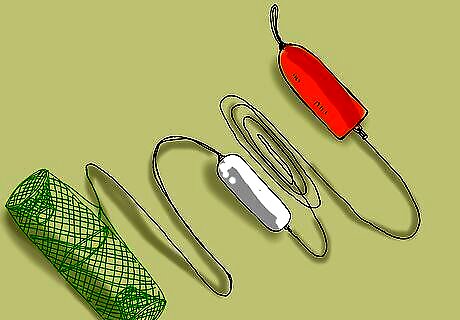
Connect your gear. Attach one end of the fishing line to the trap. Connect the other end of the line to the buoy. If you plan to set your trap far from your boat or land-based location, attach a polypropylene rope to the buoy so that you can pull the trap back to you without having to wade or swim too far.
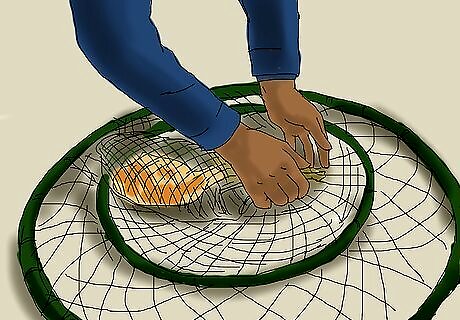
Attach bait. This step is optional, but it can help to increase your catch. Use pieces of dead fish, cat food, or artificial bait. Secure the bait in the trap with waterproof tape.

Lower the trap into the water. Slowly submerge the trap into the water from your location on land or in a boat. Allow it to sink beneath the water. The fishing line will keep the trap weighted down. Wait a few hours or monitor the underwater action with your sounder.
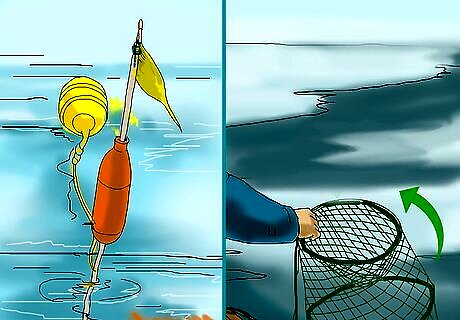
Retrieve the trap. Locate your buoy. If your trap isn’t too far from shore, wade into the water and retrieve the trap by hand. If you attached a rope to the buoy, carefully start reeling the trap back to the surface. Stash your catch in a cooler to preserve their freshness. If you’re not happy with the results, repeat the process until you catch enough prawns.

















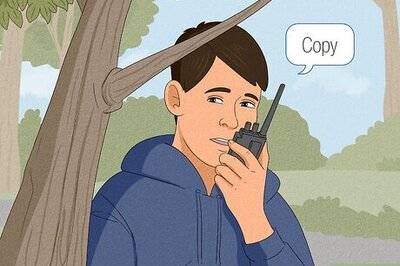

Comments
0 comment